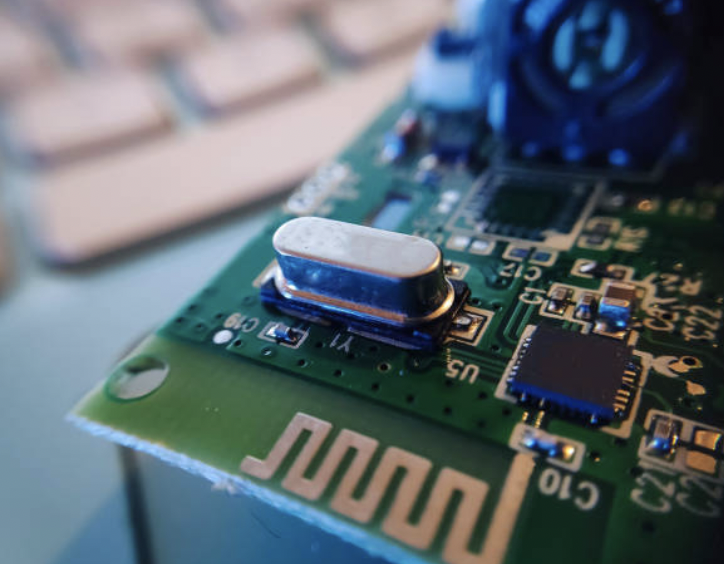Quartz Crystal Is the Superior Choice in Engineering for Several Important Reasons
A resonating surface is where frequency begins. You need a surface that, when agitated mechanically, will create a frequency.
There are resonating surfaces everywhere. Anything that generates sound when you apply force to it is a resonating surface. All you have to do is let a toddler explore your kitchen or living room, and you’ll discover how prevalent they are in your home.
However, if an engineer in the designing community is looking for a surface that generates a frequency which can be used in circuitry for a variety of applications, the most cost-effective, durable, and effective solution is a quartz crystal when used as a component in a crystal oscillator.
Why Are Quartz Crystals the Best Resonator Surfaces?
First, quartz is the second most abundant mineral on Earth. You may have had a piece of quartz on your bookshelf as a kid and considered it a treasure. If you’ve ever been hiking in the mountains, you can see veins of quartz in the rocky paths that lead you toward the summit. Therefore, quartz crystal’s abundance makes it likely that several of these components are being used in the electronic devices all around you – from your phone, to your laptop, to your wristwatch.
Many of us have puzzled over the reason why the word “quartz” is often emblazoned on older watches and other timepieces. This is because the frequency that quartz generates when mechanical movement is applied to it generates a steady, dependable frequency upon which watches move and tell accurate time.
Here is a list of additional reasons why quartz is an effective resonator:
- Quartz crystal offers a high level of stability.
- It can withstand a wide range of temperatures without significant frequency drift.
- It can be designed to function at a considerably small size.
- This mineral endures for a long period of time without dying out.
- Its signal is clearer and less affected by noise that muddies a desired frequency.
- Its natural abundance makes it affordable for engineers.
- It is durable for use in a variety of applications.
- Its versatility allows for multiple use-cases across a variety of industries.
How Is Quartz Crystal Used in an Oscillator Circuit?
Even if you have no engineering experience, the ability to envision quartz as a resonating surface for an oscillator is not as hard as it sounds.
Let’s return to the image of a toddler exploring a kitchen for things to bang on. The little one eventually – inevitably – finds a frying pan. He begins to bang on it to create sound waves – at a particular (frustratingly particular) frequency.
A frying pan is a resonating surface – just like a quartz crystal is a resonating surface. When consistent regular force is applied to the pan with the toddler’s fist, the pan will continue to generate electrical power and, thereby, a specific frequency. It is the toddler’s job to continue beating the frying pan with no purpose other than to continue making the sound. Similarly, in an oscillator circuit, the oscillator’s job is to maintain the frequency generated from the crystal in a regular pattern.
For engineers, this stable frequency pattern guarantees a reliable signal upon which so many applications can be built, from WIFI, to GPS, to clocks, and much more. For toddlers, this guarantees the annoyance of nearby parents, and eventually the pan will be confiscated and moved to a higher location. Therefore, one could say that quartz crystal is a highly reliable resonator, and frying pans are not. To extend this metaphor, there are plenty of other resonating surfaces used in oscillator circuits that are ineffective and should be replaced with quartz crystal, which offers the superior advantage.
Where to Find Manufacturers and Distributors That Make Quartz Crystal Oscillators
Engineers in the design community who are looking to develop components that require crystal oscillators will first need to consider a manufacturer that focuses specifically on these components. While there are other resonating surfaces available, the capability and effectiveness of quartz is a superior option for a number of important applications that require a frequency-based solution. If you work with a manufacturer that is dedicated to quartz crystals, you’ll know they are putting the utmost care and value into the manufacturing process and the products they supply.
Additionally, this company should provide clear, generous engineering support. No engineer who is embarking on a new design should be left to internet guides and technical manuals, even if they are useful. Person-to-person interaction is highly beneficial and even cost-effective, and the manufacturer you choose should be dedicated to providing such support. In any industry, quality is evident in what products a business chooses to sell and how they treat their customers. This is absolutely true in the electronic components business, and the manufacturer you work with may be a key differentiator in your future success.
Interesting Related Article: “5 Factors to Consider When Choosing a Quartz Stone Manufacturer“


